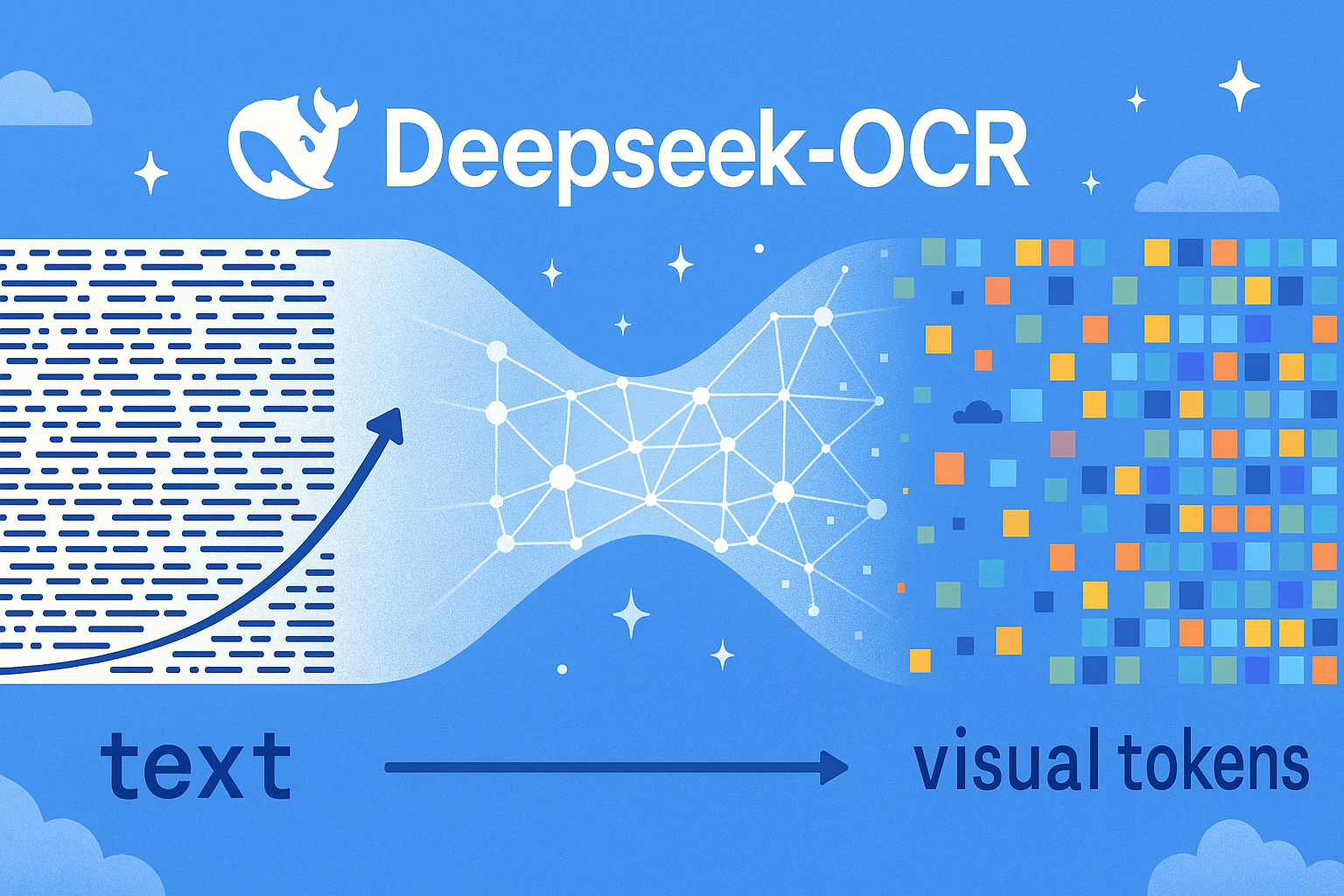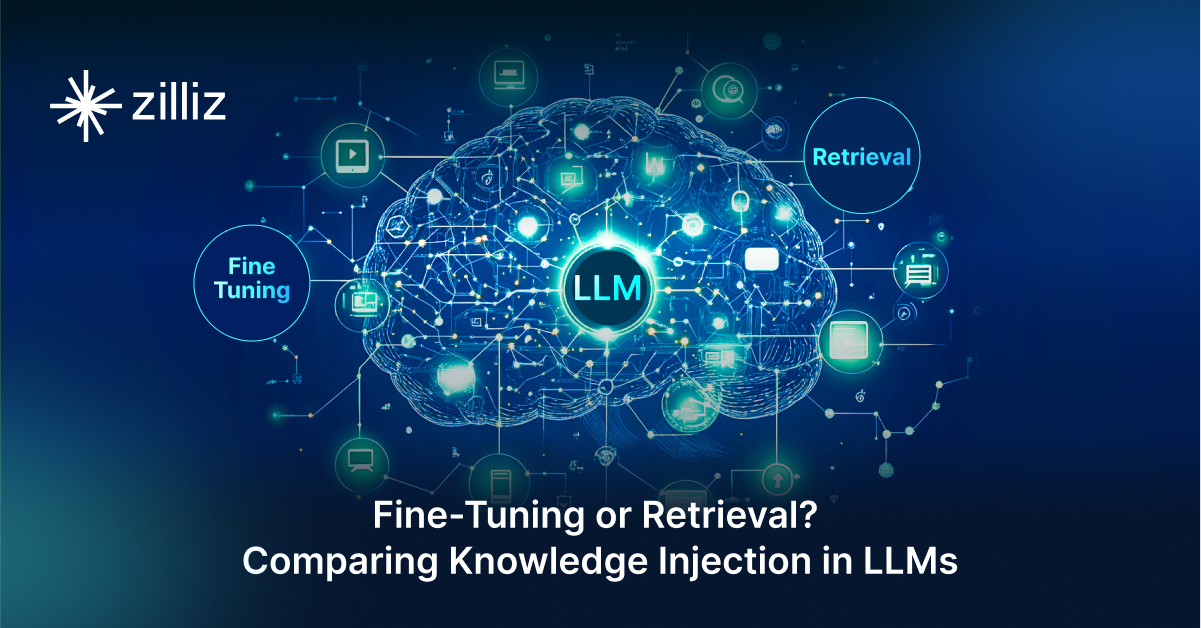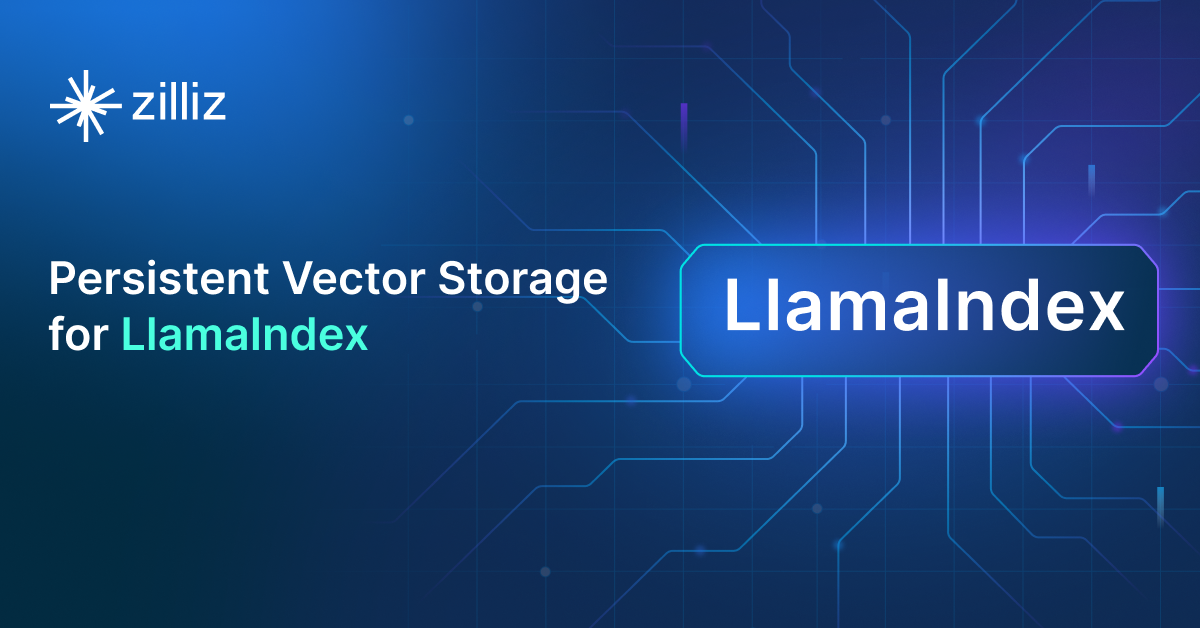Build RAG Chatbot with LangChain, OpenSearch, OpenAI GPT-4, and IBM granite-embedding-107m-multilingual
Introduction to RAG
Retrieval-Augmented Generation (RAG) is a game-changer for GenAI applications, especially in conversational AI. It combines the power of pre-trained large language models (LLMs) like OpenAI’s GPT with external knowledge sources stored in vector databases such as Milvus and Zilliz Cloud, allowing for more accurate, contextually relevant, and up-to-date response generation. A RAG pipeline usually consists of four basic components: a vector database, an embedding model, an LLM, and a framework.
Key Components We'll Use for This RAG Chatbot
This tutorial shows you how to build a simple RAG chatbot in Python using the following components:
- LangChain: An open-source framework that helps you orchestrate the interaction between LLMs, vector stores, embedding models, etc, making it easier to integrate a RAG pipeline.
- OpenSearch: An open-source search and analytics suite derived from Elasticsearch. It offers robust full-text search and real-time analytics, with vector search available as an add-on for similarity-based queries, extending its capabilities to handle high-dimensional data. Since it is just a vector search add-on rather than a purpose-built vector database, it lacks scalability and availability and many other advanced features required by enterprise-level applications. Therefore, if you prefer a much more scalable solution or hate to manage your own infrastructure, we recommend using Zilliz Cloud, which is a fully managed vector database service built on the open-source Milvus and offers a free tier supporting up to 1 million vectors.)
- OpenAI GPT-4: GPT-4 is OpenAI's advanced language model, designed for comprehensive understanding and context-aware text generation. It excels in creative writing, complex problem-solving, and nuanced conversation, making it suitable for applications in content creation, tutoring, and interactive AI. Its robust capabilities enable it to handle a wide range of topics with depth and coherence.
- IBM granite-embedding-107m-multilingual: This AI model specializes in generating multilingual embeddings, allowing for semantic understanding across various languages. With 107 million parameters, it excels in tasks such as cross-lingual retrieval, translation, and sentiment analysis, making it ideal for global applications that require nuanced understanding of diverse linguistic contexts.
By the end of this tutorial, you’ll have a functional chatbot capable of answering questions based on a custom knowledge base.
Note: Since we may use proprietary models in our tutorials, make sure you have the required API key beforehand.
Step 1: Install and Set Up LangChain
%pip install --quiet --upgrade langchain-text-splitters langchain-community langgraph
Step 2: Install and Set Up OpenAI GPT-4
pip install -qU "langchain[openai]"
import getpass
import os
if not os.environ.get("OPENAI_API_KEY"):
os.environ["OPENAI_API_KEY"] = getpass.getpass("Enter API key for OpenAI: ")
from langchain.chat_models import init_chat_model
llm = init_chat_model("gpt-4", model_provider="openai")
Step 3: Install and Set Up IBM granite-embedding-107m-multilingual
pip install -qU langchain-ibm
import getpass
import os
if not os.environ.get("WATSONX_APIKEY"):
os.environ["WATSONX_APIKEY"] = getpass.getpass("Enter API key for IBM watsonx: ")
from langchain_ibm import WatsonxEmbeddings
embeddings = WatsonxEmbeddings(
model_id="ibm/granite-embedding-107m-multilingual",
url="https://us-south.ml.cloud.ibm.com",
project_id="<WATSONX PROJECT_ID>",
)
Step 4: Install and Set Up OpenSearch
pip install --upgrade --quiet opensearch-py langchain-community
from langchain_community.vectorstores import OpenSearchVectorSearch
opensearch_vector_search = OpenSearchVectorSearch(
"http://localhost:9200",
"embeddings",
embedding_function
)
Step 5: Build a RAG Chatbot
Now that you’ve set up all components, let’s start to build a simple chatbot. We’ll use the Milvus introduction doc as a private knowledge base. You can replace it with your own dataset to customize your RAG chatbot.
import bs4
from langchain import hub
from langchain_community.document_loaders import WebBaseLoader
from langchain_core.documents import Document
from langchain_text_splitters import RecursiveCharacterTextSplitter
from langgraph.graph import START, StateGraph
from typing_extensions import List, TypedDict
# Load and chunk contents of the blog
loader = WebBaseLoader(
web_paths=("https://milvus.io/docs/overview.md",),
bs_kwargs=dict(
parse_only=bs4.SoupStrainer(
class_=("doc-style doc-post-content")
)
),
)
docs = loader.load()
text_splitter = RecursiveCharacterTextSplitter(chunk_size=1000, chunk_overlap=200)
all_splits = text_splitter.split_documents(docs)
# Index chunks
_ = vector_store.add_documents(documents=all_splits)
# Define prompt for question-answering
prompt = hub.pull("rlm/rag-prompt")
# Define state for application
class State(TypedDict):
question: str
context: List[Document]
answer: str
# Define application steps
def retrieve(state: State):
retrieved_docs = vector_store.similarity_search(state["question"])
return {"context": retrieved_docs}
def generate(state: State):
docs_content = "\n\n".join(doc.page_content for doc in state["context"])
messages = prompt.invoke({"question": state["question"], "context": docs_content})
response = llm.invoke(messages)
return {"answer": response.content}
# Compile application and test
graph_builder = StateGraph(State).add_sequence([retrieve, generate])
graph_builder.add_edge(START, "retrieve")
graph = graph_builder.compile()
Test the Chatbot
Yeah! You've built your own chatbot. Let's ask the chatbot a question.
response = graph.invoke({"question": "What data types does Milvus support?"})
print(response["answer"])
Example Output
Milvus supports various data types including sparse vectors, binary vectors, JSON, and arrays. Additionally, it handles common numerical and character types, making it versatile for different data modeling needs. This allows users to manage unstructured or multi-modal data efficiently.
Optimization Tips
As you build your RAG system, optimization is key to ensuring peak performance and efficiency. While setting up the components is an essential first step, fine-tuning each one will help you create a solution that works even better and scales seamlessly. In this section, we’ll share some practical tips for optimizing all these components, giving you the edge to build smarter, faster, and more responsive RAG applications.
LangChain optimization tips
To optimize LangChain, focus on minimizing redundant operations in your workflow by structuring your chains and agents efficiently. Use caching to avoid repeated computations, speeding up your system, and experiment with modular design to ensure that components like models or databases can be easily swapped out. This will provide both flexibility and efficiency, allowing you to quickly scale your system without unnecessary delays or complications.
OpenSearch optimization tips
To optimize OpenSearch in a Retrieval-Augmented Generation (RAG) setup, fine-tune indexing by enabling efficient mappings and reducing unnecessary stored fields. Use HNSW for vector search to speed up similarity queries while balancing recall and latency with appropriate ef_search and ef_construction values. Leverage shard and replica settings to distribute load effectively, and enable caching for frequent queries. Optimize text-based retrieval with BM25 tuning and custom analyzers for better relevance. Regularly monitor cluster health, index size, and query performance using OpenSearch Dashboards and adjust configurations accordingly.
OpenAI GPT-4 optimization tips
GPT-4 is a powerful model for RAG applications, but optimizing retrieval and prompt efficiency is key to reducing costs and improving response quality. Use embedding-based retrieval to ensure highly relevant context is included while avoiding unnecessary token usage. Structure prompts concisely, presenting retrieved documents in a clear, ranked format to guide the model’s focus. Fine-tune temperature (0.1–0.3) for fact-based tasks and adjust top-p and top-k sampling to control response variability. Implement caching for frequently queried information to reduce redundant API calls and improve latency. If using GPT-4 in high-traffic applications, batch requests to minimize overhead and optimize throughput. Leverage OpenAI’s function-calling capabilities to structure responses programmatically and avoid excessive hallucinations. Use response streaming for real-time applications to improve perceived performance while maintaining efficient token usage.
IBM granite-embedding-107m-multilingual optimization tips
To optimize the IBM granite-embedding-107m-multilingual model in a Retrieval-Augmented Generation (RAG) setup, start by fine-tuning the model on domain-specific data to improve its relevance and contextual understanding. Use batch processing for embedding generation to enhance throughput, and implement caching mechanisms for frequently queried embeddings to reduce latency. Regularly evaluate and update your retrieval strategies using various metrics, such as precision and recall, to ensure you're consistently retrieving the most pertinent data. Additionally, consider augmenting your dataset with diverse multilingual inputs to develop a more robust understanding of different languages, and experiment with different hyperparameter settings, such as learning rates and embedding dimensions, to find the optimal configuration for your specific use case.
By implementing these tips across your components, you'll be able to enhance the performance and functionality of your RAG system, ensuring it’s optimized for both speed and accuracy. Keep testing, iterating, and refining your setup to stay ahead in the ever-evolving world of AI development.
RAG Cost Calculator: A Free Tool to Calculate Your Cost in Seconds
Estimating the cost of a Retrieval-Augmented Generation (RAG) pipeline involves analyzing expenses across vector storage, compute resources, and API usage. Key cost drivers include vector database queries, embedding generation, and LLM inference.
RAG Cost Calculator is a free tool that quickly estimates the cost of building a RAG pipeline, including chunking, embedding, vector storage/search, and LLM generation. It also helps you identify cost-saving opportunities and achieve up to 10x cost reduction on vector databases with the serverless option.
 Calculate your RAG cost
Calculate your RAG cost
What Have You Learned?
By now, you’ve unlocked the magic of building a RAG system from the ground up! You learned how LangChain acts as the brain of the operation, seamlessly orchestrating interactions between components. With its flexible framework, you connected OpenSearch—a lightning-fast vector database—to store and retrieve embeddings efficiently, even at scale. You saw how IBM’s granite-embedding-107m-multilingual model transforms text into rich, context-aware embeddings, ensuring your system understands nuances across languages. And when it came time to generate answers, OpenAI’s GPT-4 stepped in as the powerhouse LLM, turning retrieved data into human-like responses. This tutorial showed you how these pieces fit together like a puzzle, creating a pipeline that pulls knowledge dynamically and answers questions with precision. You even explored optimizations like chunking strategies and hybrid search setups to boost speed and accuracy—pro tips that make your RAG system shine in real-world scenarios!
But wait, there’s more! You discovered how to keep costs in check using the free RAG cost calculator included in the tutorial, helping you balance performance and budget. Imagine what you can build next—customer support bots, research assistants, or multilingual knowledge hubs! The possibilities are endless, and you’ve got the skills to bring them to life. So, what’s stopping you? Dive into your own projects, experiment with tweaks, and watch your ideas transform into intelligent applications. You’ve mastered the foundations—now go optimize, iterate, and innovate. The future of AI-powered solutions is yours to shape. Let’s get building! 🚀
Further Resources
🌟 In addition to this RAG tutorial, unleash your full potential with these incredible resources to level up your RAG skills.
- How to Build a Multimodal RAG | Documentation
- How to Enhance the Performance of Your RAG Pipeline
- Graph RAG with Milvus | Documentation
- How to Evaluate RAG Applications - Zilliz Learn
- Generative AI Resource Hub | Zilliz
We'd Love to Hear What You Think!
We’d love to hear your thoughts! 🌟 Leave your questions or comments below or join our vibrant Milvus Discord community to share your experiences, ask questions, or connect with thousands of AI enthusiasts. Your journey matters to us!
If you like this tutorial, show your support by giving our Milvus GitHub repo a star ⭐—it means the world to us and inspires us to keep creating! 💖
- Introduction to RAG
- Key Components We'll Use for This RAG Chatbot
- Step 1: Install and Set Up LangChain
- Step 2: Install and Set Up OpenAI GPT-4
- Step 3: Install and Set Up IBM granite-embedding-107m-multilingual
- Step 4: Install and Set Up OpenSearch
- Step 5: Build a RAG Chatbot
- Optimization Tips
- RAG Cost Calculator: A Free Tool to Calculate Your Cost in Seconds
- What Have You Learned?
- Further Resources
- We'd Love to Hear What You Think!
Content
Vector Database at Scale
Zilliz Cloud is a fully-managed vector database built for scale, perfect for your RAG apps.
Try Zilliz Cloud for Free


